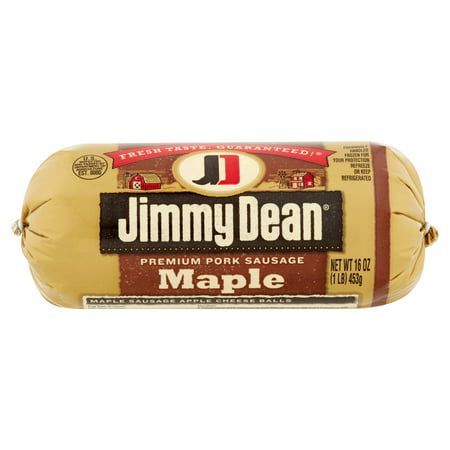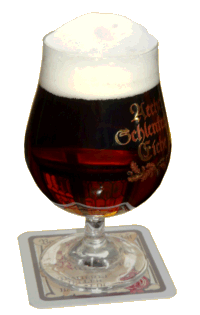- Joined
- Apr 18, 2006
- Messages
- 16,779
- Reaction score
- 5,916
Its fall and I love smoking food. Meats, Cheeses, Eggs hell you name it, it would be good smoked. I recently traded up my Schlenkerla Twitter account for Schlenkerla Beer and Swag from the Brewery. I've been sipping Schlenkerla for the last two months. If you don't know the beer its a rauch (smoke) beer. The Heller-Trum Brewery (Der Schlenkerla) makes the following; Smoked Helles, Smoked Weizen, Smoked Marzen, Smoked Urbock, Smoked Dopple Bock. Been drinking all of them. A case each. Its about the best rauch beer. All smoke beers are compared or graded to this beer. The Marzen is the benchmark.
BTW - This beer pairs well with all smoked meats, charbroiled/grilled meats, grilled Asian dishes (Hibachi) and grilled Mexican foods. If you are planning a smoking day, buy some to treat yourself to something smokey as you tend the smoker.
So as I deplete the free cases of beer I started thinking of what I'll do when its all gone. Make my own right? Of Course. I bought "Smoked Beers" by Ray Daniels and Geoff Larson. This is probably the only book I've read cover to cover as far as I can remember.
Two weeks ago I drank a few Schlenkerlas for lunch and decided to smoke malt. I needed a new smoker, so went to Lowes and I bought a CharBroil Propane Cabinet Smoker for $150.
I have "Homebrewers Garden" and "Smoke Beers" for roasting, toasting, browning and smoking inspiration. Most of what you will see here is what I read from either source or tried via experimentation.
Right now I have the following on hand...
Several gallons of distilled water... Very important.
50 lbs of Maris Otter
50 lbs of German Pale Malt
A cabinet smoker, fired with propane
A thermometer with cable probe.
Bernzomatic High Temp Blow Torch
15 oz Tin Can
Pronged Can/Bottle Opener
A large baking/roasting pan 13" x 17' x 3"
Roll of Aluminum Screen Material
Squirt Bottle/Sprayer to mist distilled water.
Apple Wood Pellets
Apple Wood Chips
Cherry Wood Chips
Maple Wood Chips
Pecan Wood Chips
Hickory Wood Chips
Mesquite Wood Chips
Beach Wood Chips
Alder Wood Chips
Oak Wood Chips
Thinking I need apple wood chunks...
I have used the pale malt to make Munich Malt, 2 versions of apple wood smoked malt. One smoked hot 150-200F and the other cold smoked malt at 90F. The malt is aging now.
The later, cold smoke, I used a modified bean can and pellets in my smoker. It works pretty good on chopped up summer sausage, cheese; Pepper Jack & Cheddar, hard boiled eggs and pork chops.
If you're AG brewer thats done everything, you might want to try this.
You can make your own;
Toasted Malt
Munich Malt
Crystal Malt
Amber Malt
Vienna Malt
Roasted Barley
Black Patent Malt
Smoked Malt - Rauch Malt
Smoked Brown Malt
Here goes.... I'm starting with the smoking first. I'll post the specialty malts instructions after I get the smoke malt info posted. They can be made via smoker or in a conventional oven.
Specialty Malt Instructions - See Post 22
BTW - This beer pairs well with all smoked meats, charbroiled/grilled meats, grilled Asian dishes (Hibachi) and grilled Mexican foods. If you are planning a smoking day, buy some to treat yourself to something smokey as you tend the smoker.
So as I deplete the free cases of beer I started thinking of what I'll do when its all gone. Make my own right? Of Course. I bought "Smoked Beers" by Ray Daniels and Geoff Larson. This is probably the only book I've read cover to cover as far as I can remember.
Two weeks ago I drank a few Schlenkerlas for lunch and decided to smoke malt. I needed a new smoker, so went to Lowes and I bought a CharBroil Propane Cabinet Smoker for $150.
I have "Homebrewers Garden" and "Smoke Beers" for roasting, toasting, browning and smoking inspiration. Most of what you will see here is what I read from either source or tried via experimentation.
Right now I have the following on hand...
Several gallons of distilled water... Very important.
50 lbs of Maris Otter
50 lbs of German Pale Malt
A cabinet smoker, fired with propane
A thermometer with cable probe.
Bernzomatic High Temp Blow Torch
15 oz Tin Can
Pronged Can/Bottle Opener
A large baking/roasting pan 13" x 17' x 3"
Roll of Aluminum Screen Material
Squirt Bottle/Sprayer to mist distilled water.
Apple Wood Pellets
Apple Wood Chips
Cherry Wood Chips
Maple Wood Chips
Pecan Wood Chips
Hickory Wood Chips
Mesquite Wood Chips
Beach Wood Chips
Alder Wood Chips
Oak Wood Chips
Thinking I need apple wood chunks...
I have used the pale malt to make Munich Malt, 2 versions of apple wood smoked malt. One smoked hot 150-200F and the other cold smoked malt at 90F. The malt is aging now.
The later, cold smoke, I used a modified bean can and pellets in my smoker. It works pretty good on chopped up summer sausage, cheese; Pepper Jack & Cheddar, hard boiled eggs and pork chops.
If you're AG brewer thats done everything, you might want to try this.
You can make your own;
Toasted Malt
Munich Malt
Crystal Malt
Amber Malt
Vienna Malt
Roasted Barley
Black Patent Malt
Smoked Malt - Rauch Malt
Smoked Brown Malt
Here goes.... I'm starting with the smoking first. I'll post the specialty malts instructions after I get the smoke malt info posted. They can be made via smoker or in a conventional oven.
Specialty Malt Instructions - See Post 22
Last edited by a moderator:













![Craft A Brew - Safale BE-256 Yeast - Fermentis - Belgian Ale Dry Yeast - For Belgian & Strong Ales - Ingredients for Home Brewing - Beer Making Supplies - [3 Pack]](https://m.media-amazon.com/images/I/51bcKEwQmWL._SL500_.jpg)














































